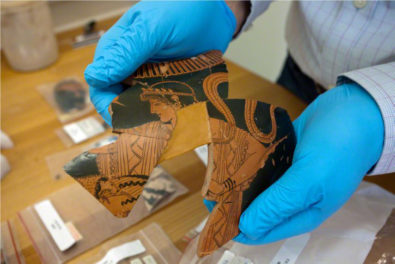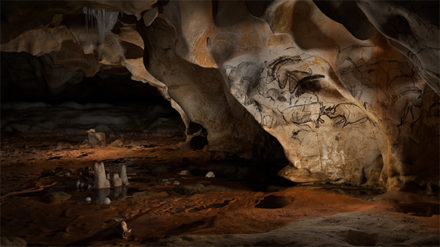
Situated on a bend of the Ayeyawady River in the dry central plain of Myanmar, the site of Bagan is a vast cultural landscape that encompasses an extraordinary ensemble of Buddhist art and architecture from the 11th–13th centuries. With more than 3,500 temples, stupas, and monasteries, the site was a popular tourist destination until the pandemic hit
As I write, we don’t yet know the full socioeconomic impact of the devastating COVID-19 pandemic on people and places around the world. But we know from conversations we’ve had with colleagues and partners globally that cultural heritage places and the many people who rely on them for their livelihoods have been, and continue to be, severely affected.
The work we do at Getty to advance the conservation of the world’s cultural heritage engages partners and colleagues around the globe. The pandemic has made us rethink how we do this work and consider how we can continue to engage and support our partners and consultants during this difficult time and beyond.
How Will the Pandemic Impact Cultural Heritage Sites?
Right now we can only speculate on the pandemic’s full impact on cultural heritage sites, but we are already seeing extremely worrying signs.
Numerous heritage sites are currently closed to the public, devastating local economies that rely on tourism. Government heritage departments and operators of heritage sites have been deeply impacted by declining income or funding reallocations as governments struggle to meet current COVID-19-related demands. At archaeological sites, looting and other forms of illegal access have been reported.
Many of the departments we collaborate with in our work at heritage sites are government-run, which means that their staff are at the forefront of government policies on how people can access sites, how visitors and staff can be kept safe, and when a site should shut down.
At the same time that staff are dealing with emerging COVID-19 health and safety issues, they are maintaining and caring for sites. Because of this situation, work has been affected; we know of site managers who are struggling to do vital repair and maintenance work.

Final conservation work to the mosaic pavement in the Tablinum of the House of the Bicentenary was undertaken by the Conservation Institute’s local conservation consultants in the spring. The project is a partnership with the Archaeological Park of Herculaneum and the Herculaneum Conservation Project
We are also seeing changes in policy. As a COVID-19 recovery solution, some governments are beginning to take steps to relax planning and environmental legislation to allow greater development. But this short-sighted action could pose a real threat for heritage sites.
Supporting Our Partners and Sustaining Our Work in the Field
While we are currently unable to travel to our international project sites, we remain committed to our collaborative project work. We have reaffirmed our support to our partners and have been looking for ways to assist however we can.
In Myanmar, the engineers we collaborate with at the World Heritage Site of Bagan have been continuing the documentation and recording work we began in February, and we’ve offered them ongoing mentoring to enhance the training they’ve already received.
Before the pandemic hit, our Bagan colleagues had planned to travel to the International Institute of Technology in Madras, India, together with a group from the Myanmar Technological University, to review the structural models of the temples at Bagan developed by the engineers. With travel impossible, this work was able to continue remotely on Zoom over the course of two weeks.
We’ve also been able to support the continuation of work at sites in Italy and Peru. At the World Heritage Site of Herculaneum, Italy, our local consultant conservators worked to complete the conservation of the mosaics in the Tablinum at the House of the Bicentenary. In the Andes of Peru, we are working with the local community of Kuñotambo on a maintenance plan for a church whose conservation we completed last year with our partner, the Dirección Desconcentrada de Cultura de Cusco, Peru.

Church of Santiago Apóstol is located in the Comunidad Campesina Kuñotambo, a remote village of 500 inhabitants located southeast of the city of Cusco. Constructed in 1681 and conserved by the Conservation Institute and Dirección Desconcentrada de Cultura de Cusco, the church is now being maintained by the local community
Reimagining Our Training and Resources
In addition to our work at heritage sites, we offer training courses for professionals. These courses, like our field work, have been affected by the pandemic. We’ve postponed or rethought courses we had planned over the next 12 months, including the International Course on the Conservation of Earthen Architecture in Abu Dhabi and the Old Cities New Challenges urban conservation course in Penang, Malaysia. The earthen architecture course, which involves hands-on practical building conservation activities, has been rescheduled for 2022, while Old Cities New Challenges is being reimagined as an online course, with an in-person follow-up in Penang when travel can safely resume.

The Earthen Architecture course held biannually with the Abu Dhabi Department of Culture and Tourism includes hands-on training in conserving historic earthen buildings. The course has been postponed until 2022
We are taking advantage of this additional time to examine ways to expand our training, to look at new technologies that can help us deliver training to a wider audience in new ways, and to create training materials that provide a lasting legacy in our areas of work. Future training courses in site management, mosaics conservation, and modern architecture will benefit from this reflection.
We are also thinking extensively about the training materials we create and how we might package these materials for broader use and accessibility. This thinking won’t end with the pandemic—it will inform our work moving forward. Our goal is to engage long term with our partners, so as to explore the nature of their challenges and the ways we can best respond to them.
The pause in our travels has also given us time to focus on the development of publications and resources that can close information gaps in the field. So far we’ve identified a number of books we can digitize, to make them more readily available to the conservation field. We’ve also conceived of new resources to serve the conservation community, including a new book series on modern architectural materials, new publications on urban conservation, and a range of training manuals and guidelines. This brainstorming has been really exciting—and something, under normal circumstances, that we often don’t have time to do.
The Future of Cultural Heritage Conservation
As we emerge from this pandemic, the landscape for cultural heritage may be permanently changed. Some institutions may not survive. And the destructive impact on countless people who rely on cultural heritage for their livelihood will likely be enormous. Because of that, the cultural heritage sector must play an essential and powerful role in helping to rebuild local economies, provided that these recovery efforts are designed to benefit those most in need of support. We expect that the current spotlight on equity and social justice will bring lasting change to our sector, since conservation has long played a role in fundamental societal issues such as human rights, social justice, and climate change.
All of us working to conserve cultural heritage must dedicate ourselves to effecting meaningful change—both in what we do and how we go about our work—so that our society can be as equal and as just as it aspires to be.




Comments on this post are now closed.